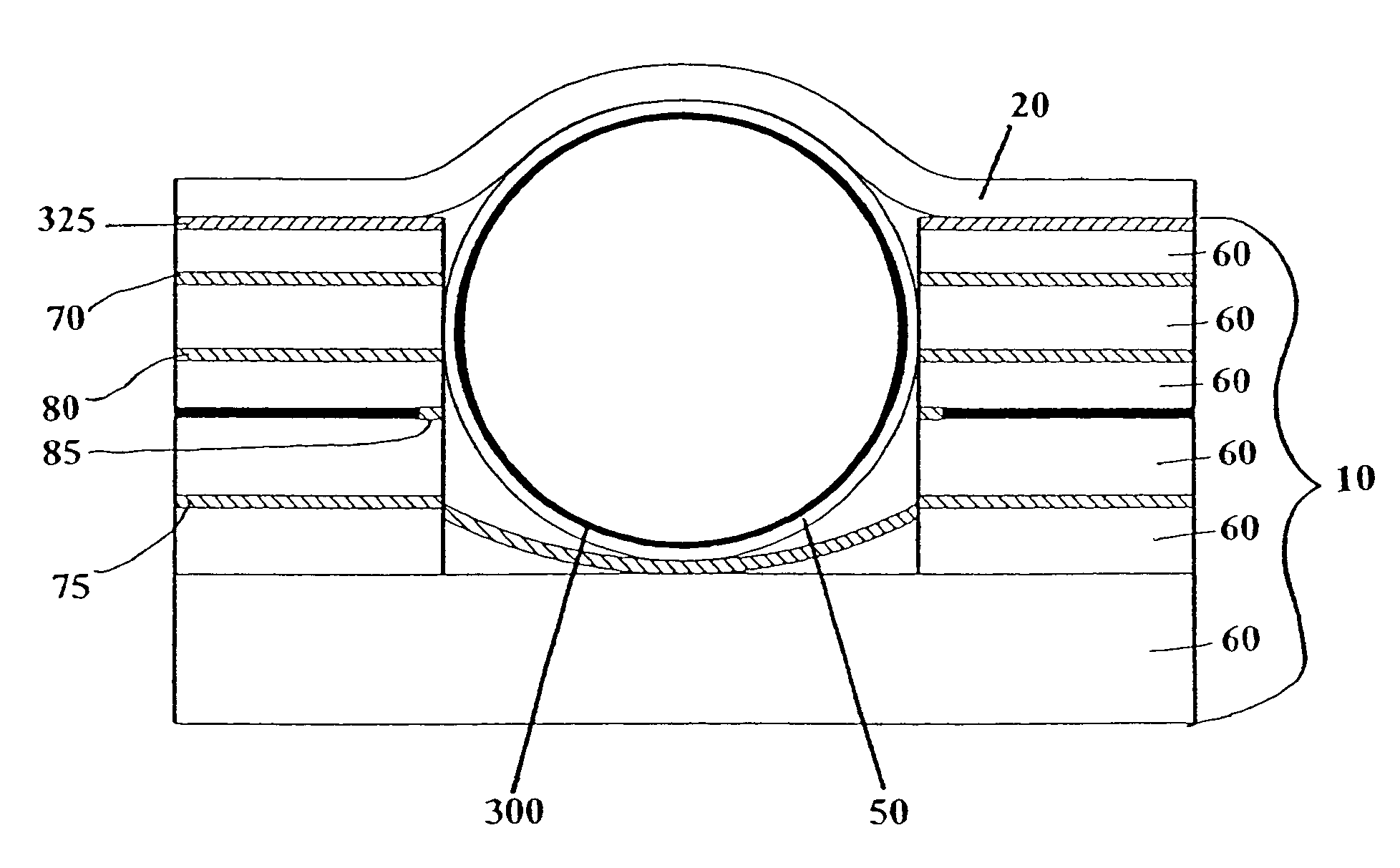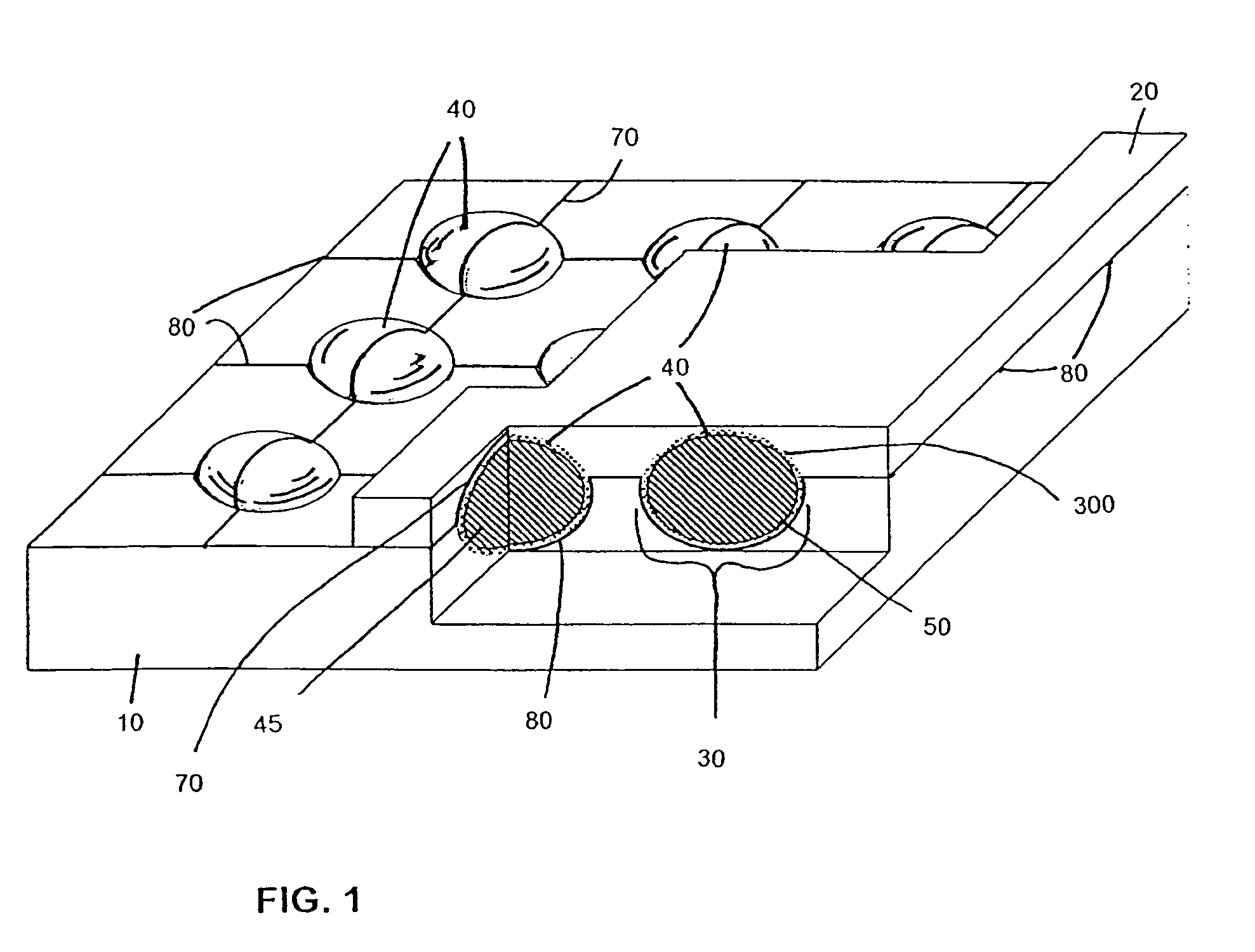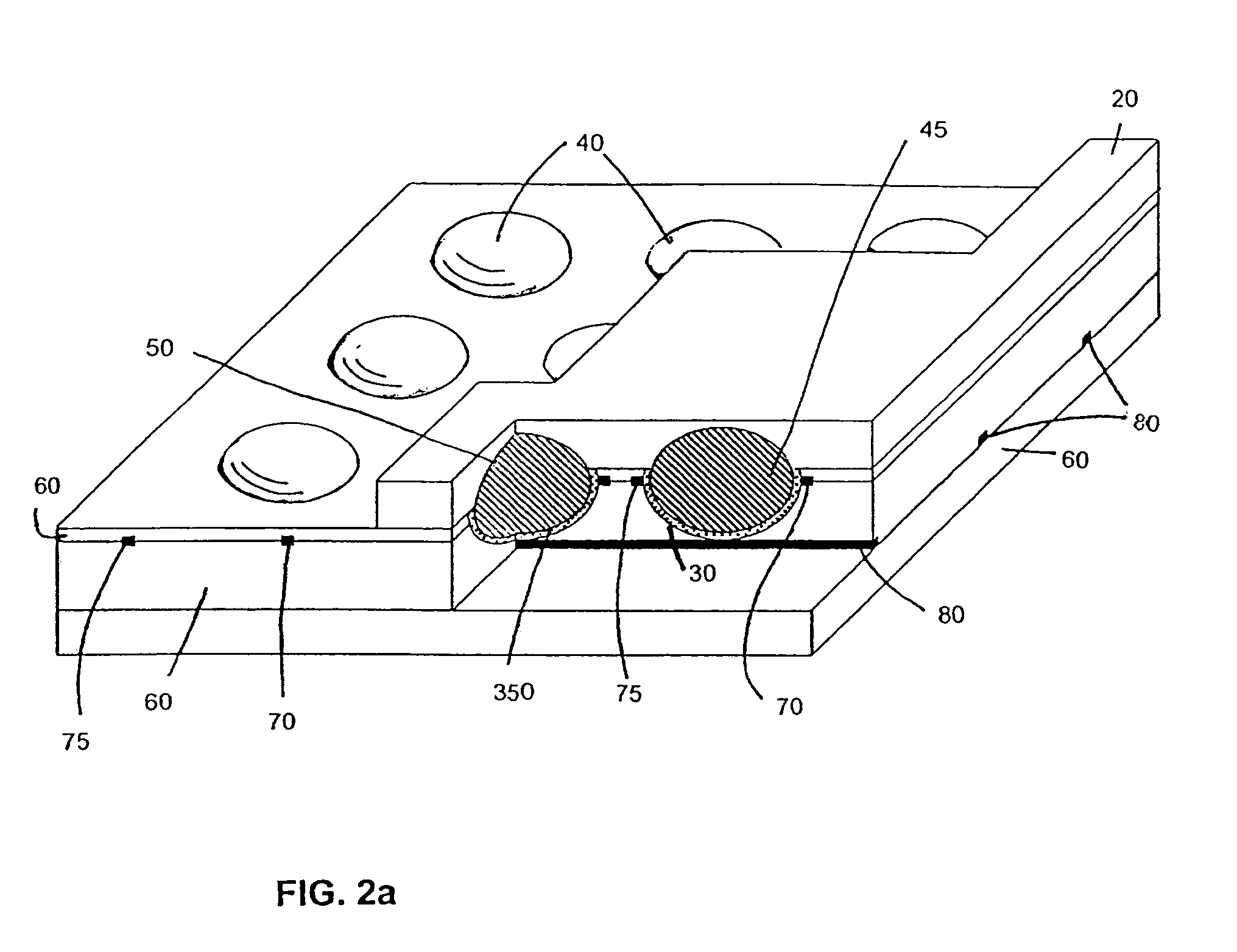Liquid manufacturing processes for panel layer fabrication
a technology of panel layer and fabrication process, which is applied in the manufacture of electric discharge tubes/lamps, instruments, television systems, etc., can solve the problems of gas leakage, type of open display structure, and high end product cos
- Summary
- Abstract
- Description
- Claims
- Application Information
AI Technical Summary
Benefits of technology
Problems solved by technology
Method used
Image
Examples
Embodiment Construction
[0031]As embodied and broadly described herein, the preferred embodiments of the present invention are directed to a novel method for making a light-emitting panel. In particular, preferred embodiments are directed to web fabrication processes for manufacturing light-emitting panels.
[0032]FIG. 1 illustrates an exemplary display panel in which a plurality of sphere-shaped micro-components 40 are embedded within a sandwich of dielectric layers consisting of first substrate 10 and second substrate 20. The first substrate 10 is formed from a flexible sheet material that is appropriate for web fabrication, such as polyester (e.g., Mylar®), polyimide (e.g., Kapton®), polypropylene, polyethylene, propylene, nylon or any polymer-based material possessing dielectric properties appropriate for use as an insulator between electrodes as needed for operation of a plasma display panel. Such electrical requirements are known to those of skill in the art. Second substrate 20 may be made from the sa...
PUM
| Property | Measurement | Unit |
|---|---|---|
| radiating wavelengths | aaaaa | aaaaa |
| radiating wavelengths | aaaaa | aaaaa |
| diameter | aaaaa | aaaaa |
Abstract
Description
Claims
Application Information
 Login to View More
Login to View More - R&D
- Intellectual Property
- Life Sciences
- Materials
- Tech Scout
- Unparalleled Data Quality
- Higher Quality Content
- 60% Fewer Hallucinations
Browse by: Latest US Patents, China's latest patents, Technical Efficacy Thesaurus, Application Domain, Technology Topic, Popular Technical Reports.
© 2025 PatSnap. All rights reserved.Legal|Privacy policy|Modern Slavery Act Transparency Statement|Sitemap|About US| Contact US: help@patsnap.com



